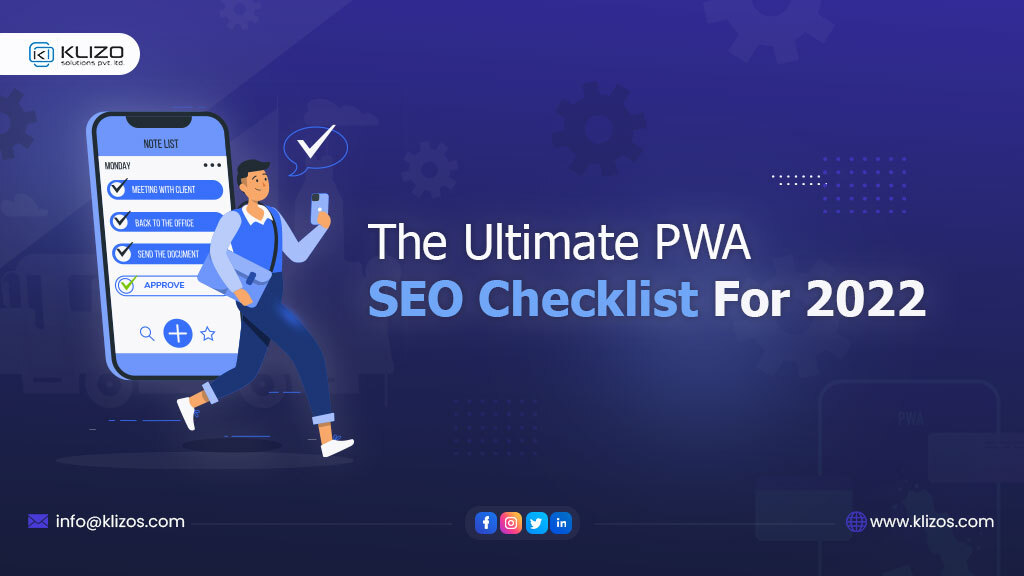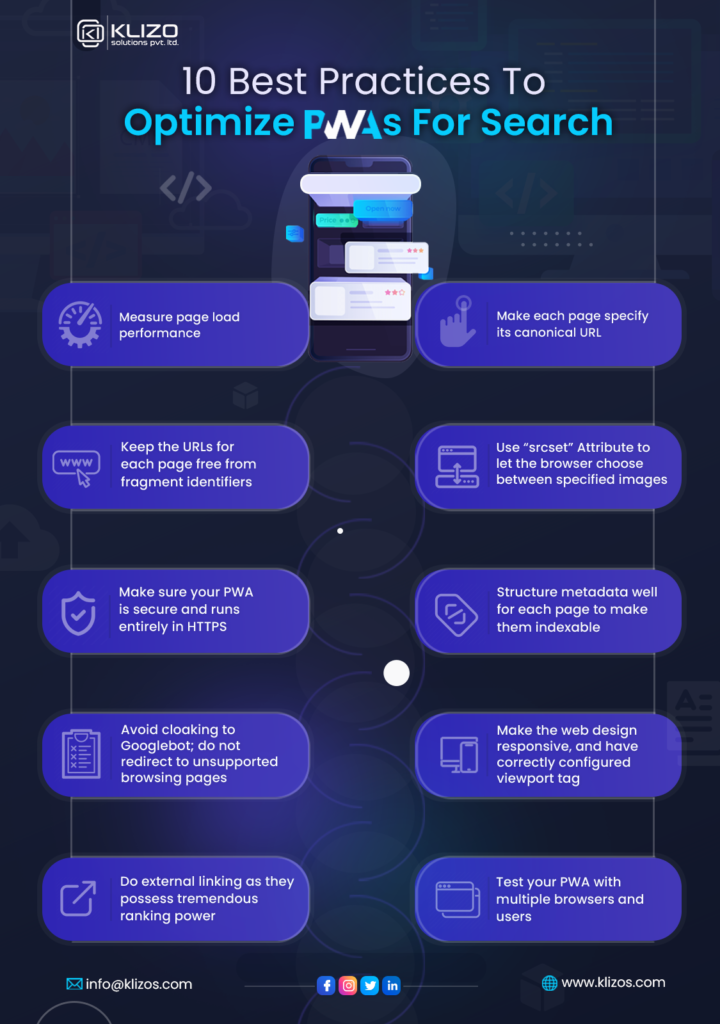


“Progressive Web Apps blur the line between Web content and apps, but keep the strengths of the Web.”
Yes, that’s what a PWA or Progressive Web App is all about. This latest generation of websites, thoroughly optimized for mobiles, feels and behaves like native mobile apps while running on web browsers and is being loved by people. But creating Progressive Web Apps isn’t enough to drive business success if it fails to appear in the search results. You must make sure that your PWA is indexable and discoverable by the search engines as that’s where lies the pathway to success, conversion, and lead generation.
So you see, it’s critical to balance the way you develop progressive web apps following the primary SEO principles. And that’s why we have prepared a PWA checklist for better search engine optimization. Let’s dive into the best ways of optimizing progressive web apps for search engines.
Even Google bots get frustrated waiting for a page to load. Don’t you think that the users will feel the same, too, if your progressive web app takes time in loading? I can bet, if this article took too long to load, you would have skipped it for sure.
So make it a point to use speed measuring tools and do the needful to keep the performance of your progressive web apps up. After all, it is no secret that the page performance or the page loading speed is one of the vital signals algorithms use to rank pages. Take the website of Starbucks as a progressive web app example that knows how to keep the site’s performance high.
Do the URL structures of your PWA contain fragment identifiers like # or #!? If yes, then know that Google bots won’t index those URLs. Once the bots encounter a fragment identifier, it stops crawling and indexing further.
Take an example from the successful PWA apps list, such as Trivago, Pinterest, or Twitter, and you’ll see that they avoid using fragment identifiers. Each page of your progressive web app should be available through a specific URL and be independently crawlable.
Every web solution needs to be protected, whether it deals with sensitive communication or not. Yes, HTTPS is now a must-have! Why? Because using non-secure resources takes a negative toll on the search engine ranking.
Make sure to run your progressive web app on HTTPS, with a 301 status code redirecting the users from HTTP to HTTPS, which is more secure. The presence of HTTPS is one of the many ways when it comes to how to identify progressive web apps that are SEO friendly.
Cloaking is one of those black hat SEO techniques that is strongly condemned by Google bots as it violates the Webmaster Guidelines by Google. Content cloaking provides the users with different results than what they expect. It shows something to Google bots and something else to the users.
Hence, for effective PWA SEO, keep the content the same for Google search bots and the users when using dynamic serving for changing the device as per the device or redirects.
Have you made sure that the same content doesn’t appear under multiple URLs? By using the link tag rel=“canonical” to your original content, you can tell the search engines that the specific URL represents the master copy of the page.
The canonical tag helps prevent problems that ‘duplicate’ or identical content appearing on multiple URLs might cause to the SEO ranking for progressive web apps.

Are you familiar with how to make a progressive web app? Then you already know that these websites are designed to feel and look like native mobile apps, which is one of the main reasons behind their popularity.
But just because you have a PWA, the search engines will not rank it higher. You have to ensure that your PWA has a responsive design if you want a better SEO ranking.
And how can your PWA achieve responsiveness? Simple, by qualifying Google’s mobile-friendly test, including a correctly configured viewport tag, and dynamically scaling the design elements like fonts, margins, buttons, paddings, etc., to different viewpoints and resolutions.
Another PWA standard that you need to follow for better SEO is using the “scrset” attribute. This attribute specifies the URL of an image that can be used in different situations and boosts the overall SEO experience of the PWA.
When images are scaled up, they take ages to load, which affects the scroll performance. Even the margins and padding of the given elements go out of line. But when you use the “scrset” attribute your progressive web app fetches images of different resolutions, according to the display capabilities of the screen.
Metadata helps search engines have a general idea about the purpose of the content of a web page. It helps Webmasters determine the search queries for which the content is relevant.
Metadata lets XML-based applications contextualize and categorize pieces of data and influence the click-through rates (CTRs) that impact the SEO and ranking. Plus, when sharing your PWA on any social media platform, properly structured metadata also helps with the seamless transition. Hence, abide by the appropriate metadata format when ensuring that you do not miss the crucial features of progressive web apps!
Do you know that external linking comes with more ranking power than internal linking? So, along with being aware of the progressive web apps technologies, you need to know about external linking, too, if you want to make your PWA SEO-friendly.
Yes, search engines consider external linking as third-party votes, which enable it to pass link equity. External linking is considered a critical source of ranking power that can boost the authority of your PWA by providing the viewers with references.
But wait, not all external linking is indexed by Google. And that is why you need to do the correct external linking. Here is one pro tip for you: Google always crawls and indexes the regular “a href” link.
Don’t you want to see how Google sees your progressive web app? Or how the users see it? Make testing your progressive web app both as bots and as users one of the must-include steps of your PWA testing checklist.
From the SEO perspective, especially, understanding how Google bots are rendering the content of your PWA is crucial. It will help you make the necessary amendments and optimizations and turn your PWA’s performance from So-So to Wow.
A progressive web app combines the best of native applications and web technologies and provides a unified experience. As per one 2019 report, show that the conversion rate of progressive web apps is 36% higher than native mobile apps. As a result, more and more businesses are switching to PWAs for the user-friendliness of mobile apps and the ease of the mobile web.
Are you planning to build one PWA for your business too? Then you might need us! Well, we, Klizo Solutions, can help you create such PWAs that work flawlessly and smoothly on any device and bring the best-in-class user experience.
So, give us a call today and let our technology-driven personalized solutions help you sort your website/app requirements!
Previous article
Joey Ricard
Klizo Solutions was founded by Joseph Ricard, a serial entrepreneur from America who has spent over ten years working in India, developing innovative tech solutions, building good teams, and admirable processes. And today, he has a team of over 50 super-talented people with him and various high-level technologies developed in multiple frameworks to his credit.

Subscribe to our newsletter to get the latest tech updates.